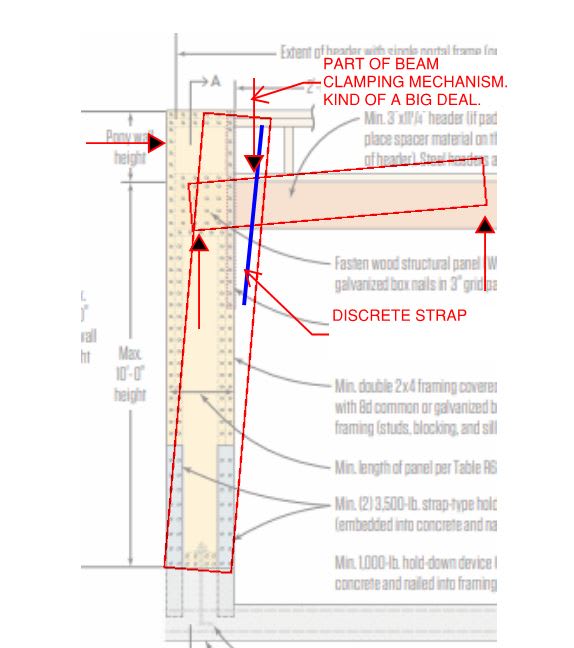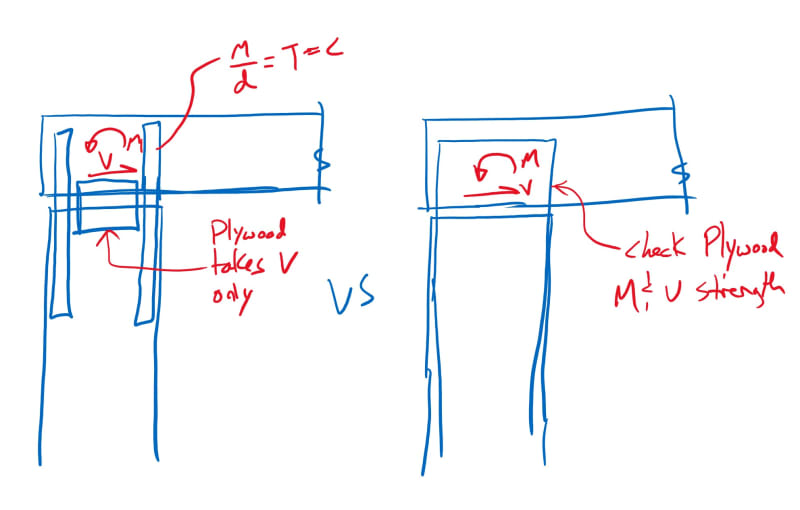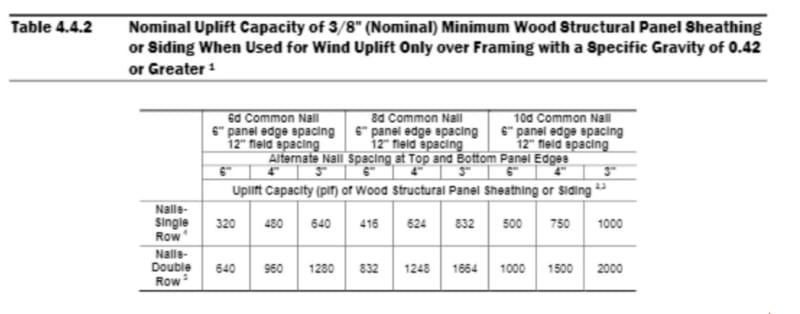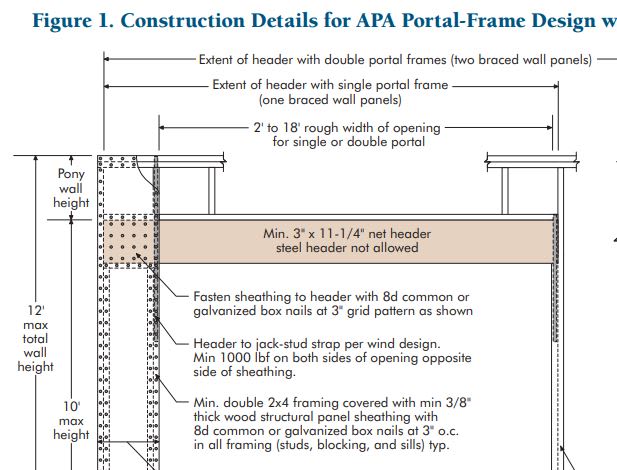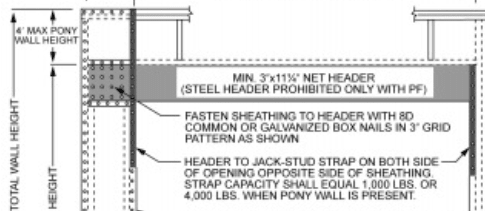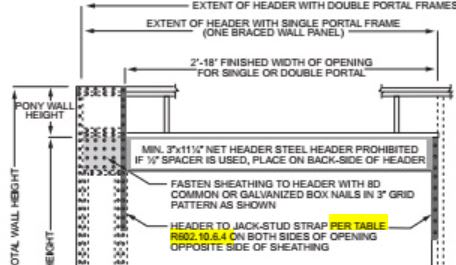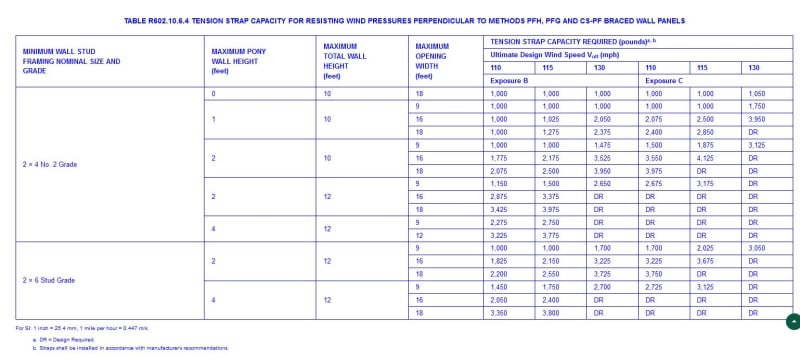As I ponder this one, I wonder - how much is the strap really considered to contribute to the lateral resistance?
KootK's post from 17 Nov 20 22:19 makes perfect sense, but what happens when you reverse the load? After all, these things aren't required to be on both sides of the opening, and when they are they count as two. So, a single side has to resist loads from both sides. When it rocks the other way, the strap doesn't do anything, and everything we were assuming the strap would do has to be accomplished by the sheathing, correct?
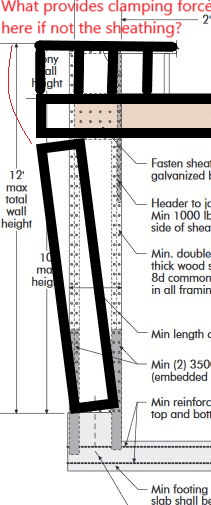
I think it's there for simplicity of code compliance and inspection. If you have a one sided portal frame, and the sheathing can do all of the lateral resistance work, you need a strap on the far side of the opening to complete the assembly (to hold down the header that is now fixed at the PF segment). THAT is where the variable capacity comes from - based on height, wind speed, exposure, and opening width, you get different values for that strap. The problem with this interpretation, though, is that for the same speed, exposure, and height, the strap requirement goes up with greater opening width. By showing the strap on both sides, it prevents confusion on where to put them in various arrangements.
The other possible interpretation (though it could be both), is that it provides a discreet uplift load path that 1) minimizes combined loading on the shear panel of the PF and 2) accounts for higher requirements as the opening grows.
This is all wild speculation, and hopefully either somebody else already has the time or information, or I can find the time or information to run a few numbers to see if it's plausible beyond the intuitive.

